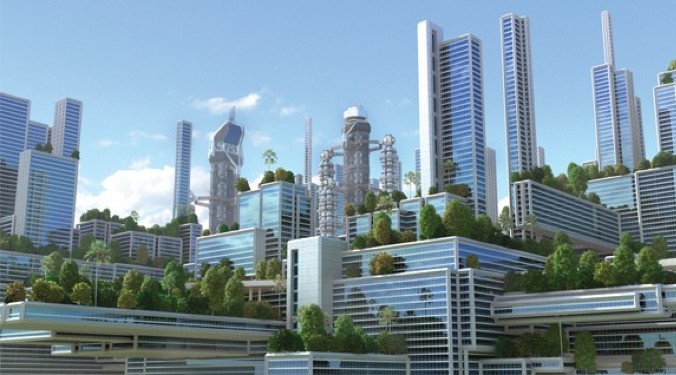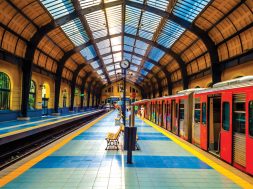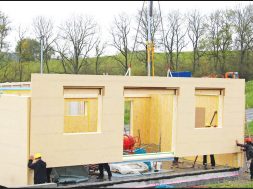Heading towards a green and sustainable future

From our roots which taught us to live in sync with nature to modern day techniques and methods, the Indian building and construction sector strives to maintain the status quo.
The landmass in India unlike its population is not increasing which in a way puts a question mark on our future at times. Will we have enough space for the future generations to move and breathe freely? The mindless construction that we are engaging in, will it ensure our survival as specie or will Armageddon prove be the final resort, for a new start. The pandemic has made us realize that apart from creating pockets of existence in the form of high-rises and palaces alone are not helping. We need to look at the larger picture and see to what degree are our construction practices and homes are in sync with nature.
This necessitates the incorporation of sustainable and green principles in the entire supply chain of building and construction. As such traditional Indian architecture has advocated sustainability, however in the contemporary scene such in not the case. In India as also globally architects, developers and designers realized this issue which in turn reemphasized the fact that we need to build responsibly. This led to the advent of rating agencies like GBCI, IGBC, GRIHA which have now become the torch bearers of green and sustainable construction. Thanks to this development the building and construction sector is increasing embracing sustainable and green buildings.
It will not be unfair to say this that modern day innovations in terms of materials and technologies have ensured that made it easier to go green
Nilesh Gandhi, Principal Architect, Metadesign Architects says “The newer products that are available are easily adaptable. For example if we look at it from water saving perspective the tap design has undergone a sea of change. Sensor based taps are available, push taps, prismatic taps etc. For that matter, to reduce heat ingress and the cooling load newer methods and products to enable acoustics and thermal insulation have come into play. The use of fly ash in the cement industry is also an environmentally-friendly way to put waste materials from other industries to good use in producing good quality building materials. Technologically speaking, the use of software for understanding solar radiation and the solar orientation to align the building accordingly is also one development on how technology is shaping the foundation of green and sustainable buildings of the future.”
In the array of materials, which is utilized in the building and construction industry, steel is omnipresent. What’s even better is that the use of recycled steel goes a long way in making a building green and sustainable. Roshni Udyavar Yehuda, Founder and Principal Architect, Roshni Udyavar and Associates adds, “Any building material that is durable can be considered as good because it postpones the use of virgin materials. Steel, in that sense, is sustainable. But it is a material that has high embodied energy and high pollution impacts during manufacturing and extraction process. Recycled steel uses 30% less embodied energy than fresh steel. Similarly, while plastic itself has a high embodied energy impact on environment, including soil, water and air pollution, use of recycled plastic to make composites using wood, presents an opportunity to reduce the impact.”
For making buildings green and sustainable it is essential that steps are taken during the construction phase itself Ankit Bhalla, Dy. Manager – Technical, GRIHA Council points out that in GRIHA it is a standard practice to do so. “At GRIHA we have certain site compliances to ensure we can make the construction process greener and more sustainable, our first site visit usually happens when the project is above the plinth level. We take a look at the developments and check the concern areas. Accordingly we offer expert advice on ways and methods to reverse the damage. Likewise our second site visit looks at the electrical and mechanical systems installed in the project for ECBC compliances. Again after a thorough check up we recommend any changes if desired. Proper planning of a project with due regards to green and sustainable measures can save a lot of money. In fact it’s a known fact that 3 per cent to 4 per cent of the miscellaneous construction cost can be saved if proper planning is done.”
Though sustainable and green buildings have seen a reasonable penetration in the urban landscape, there is always a concern. The concern is about the project cost. Many developers and real estate experts believe that going green essentially means an in increase in cost of the project. India being a cost sensitive market this is definitely a cause of worry. However the ground reality is fast changing
Mala Singh, Founder & Director of PEC Greening India and Co Chair – IGBC Mumbai Chapter says “The demand for green building products and materials is rising as a result of the Green Building Movement’s gradual expansion in India over the past ten years, making them widely accessible in the local markets. Even the price of green building supplies and materials is now comparable to, if not less expensive than, the price of conventional products. Utilizing green products and resources helps businesses succeed while also raising the need for green jobs, which fosters the expansion of the green economy in our nation.”
Speaking of IGBC’s continual involvement in India’s green landscape she adds “Indian Green Council, however, holds a significant stake in the construction industry’s use of green buildings (IGBC). The simple answer is that IGBC has the highest level of stakeholder participation from the construction and product industries. In addition, IGBC has a variety of ratings for various project categories, including residential, commercial, health care, existing building, industrial, metro and railways, educational, green campus, green townships, SEZs, etc. that are appropriate for the typologies of various building projects.”
26
Cookie Consent
We use cookies to personalize your experience. By continuing to visit this website you agree to our Terms & Conditions, Privacy Policy and Cookie Policy.









